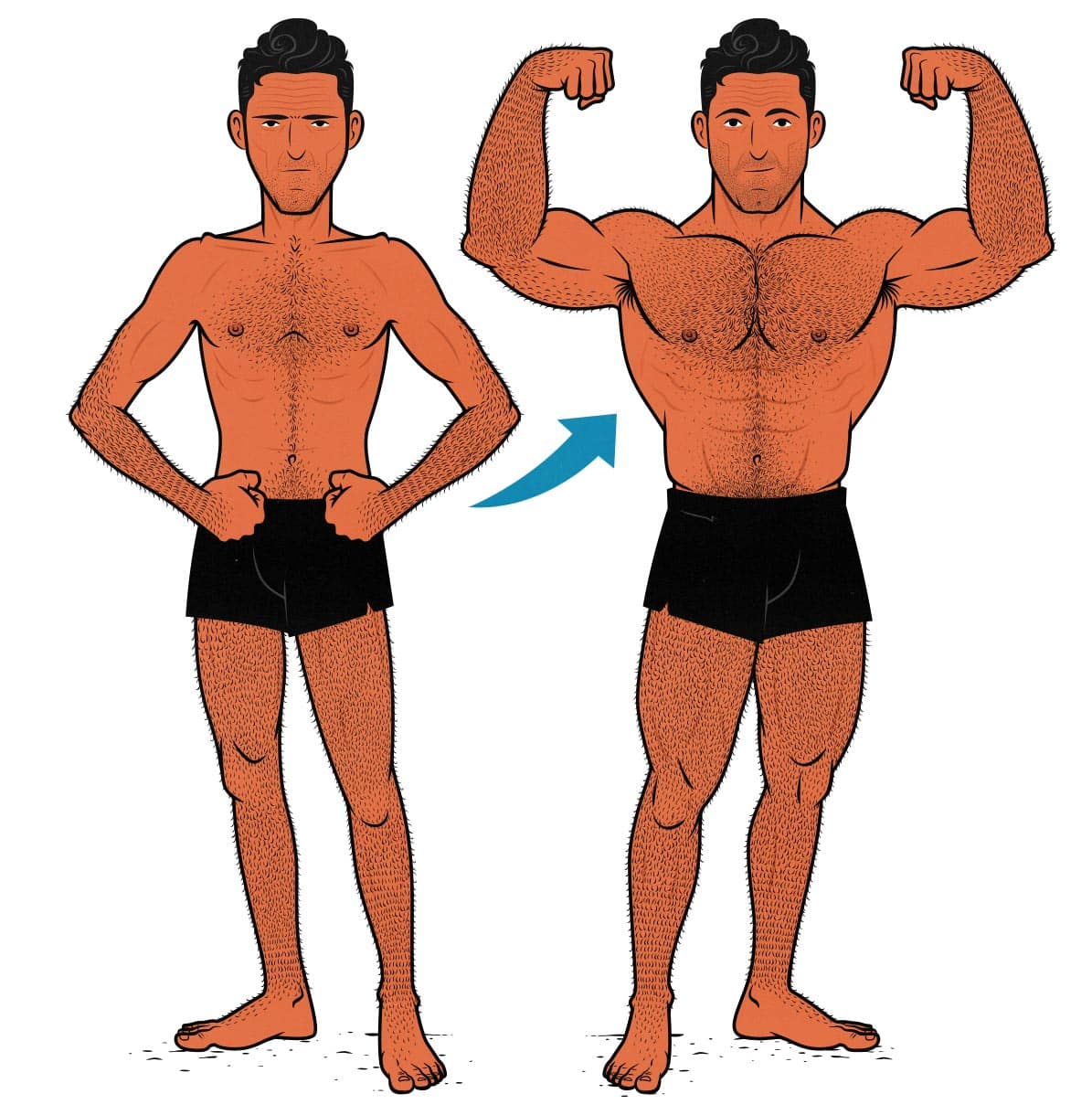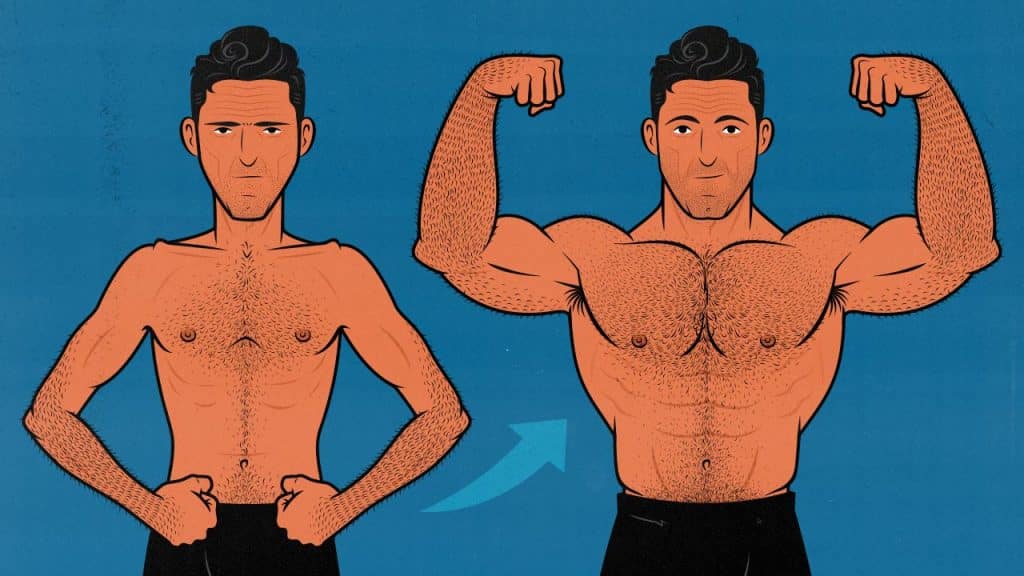Have you ever wondered whether there’s an age limit for building muscle, particularly if you’re trying to get those coveted bigger arms? Whether you’re in your 20s, 50s, or even beyond that, building muscle can feel daunting. The question of whether it’s ever too late to start or continue this journey often arises. This comprehensive article aims to answer those questions and give you practical advice and insights.

The Science of Muscle Growth
Understanding how muscles grow is key to understanding whether age affects this process. Muscle growth, scientifically termed hypertrophy, occurs when your muscle fibers sustain damage or injury.
How Muscle Hypertrophy Happens
When you lift weights or perform resistance training, your muscles sustain micro-tears in their fibers. To repair this, the body fuses muscle fibers, which increases muscle mass and strength. This process is grounded in three primary mechanisms:
- Mechanical Tension: Lifting heavy weights creates tension in the muscle fibers.
- Muscle Damage: The aforementioned micro-tears need repair.
- Metabolic Stress: High-repetition exercises lead to a buildup of metabolites, contributing to muscle growth.
Biological Factors Affecting Muscle Growth
In addition to the mechanics of muscle growth, several biological factors contribute to how effectively your muscles can grow. Hormones like testosterone and growth hormone play a significant role. Nutrient intake is vital, with proteins being the building blocks of muscle. Rest and recovery also cannot be overstated; without them, you’re likely to overwork and damage your muscles.
Age and Muscle Building: A Closer Look
One common misconception is that age is a roadblock to muscle growth. While it is true that muscle mass and strength typically decline as you age, this doesn’t necessarily mean the end of your muscle-building journey.
Muscle Loss Over Time
Sarcopenia is the medical term for age-related muscle loss. Beginning around the age of 30, muscle mass declines at a rate of about 1% per year, accelerating to 3-5% annually after age 50. But don’t lose hope! You can significantly slow this process through resistance training and proper nutrition.
The Role of Hormones
Hormones also change as you age. Testosterone and growth hormone levels generally decline, making muscle growth more challenging but not impossible. With focused efforts on diet, exercise, and perhaps even medical advice, you can counteract some of these limitations.
Techniques for Building Muscle at Any Age
Knowing that muscle growth is possible no matter your age, how do you go about achieving it? The underlying principles remain the same, but the approach may need some adjustment when you’re older.
Resistance Training Is Key
For muscle hypertrophy, resistance training is essential. Whether it’s free weights, machines, or body-weight exercises, the goal is to stimulate muscle fibers.
- Younger adults: Focus on progressive overload. Gradually increase the weight, reps, or intensity. Aim for compound movements like bench presses, squats, and deadlifts.
- Older adults: Start slower to reduce the risk of injury. Consider lighter weights with higher repetitions. Don’t skip those compound movements but ensure proper form to protect joints and tendons.
Protein Intake
Protein synthesis is crucial for muscle growth and repair. Dietary protein should be consumed consistently throughout the day for maximum benefit.
- Protein Sources: Lean meats, fish, eggs, dairy, beans, and legumes.
- Protein Timing: Aim for 20-30 grams of protein per meal, including a post-workout protein shake if you prefer.
Supplements
Certain supplements can support your muscle-building journey at any age. Popular choices include:
| Supplement | Function |
|---|---|
| Whey Protein | Enhances muscle repair and growth |
| Creatine | Boosts strength and performance |
| Branched-Chain Amino Acids (BCAAs) | Aids in muscle recovery and reduces fatigue |
| Vitamin D | Supports bone health and muscle function |
| Omega-3 Fatty Acids | Reduces inflammation and supports muscle health |
Recovery and Rest
Don’t underestimate the power of sleep and rest days. They are crucial for muscle repair and growth. Aim for 7-9 hours of quality sleep per night and incorporate rest days into your routine to avoid overtraining.
Addressing Common Concerns
When you’re older, various physical and psychological factors can make muscle-building seem more intimidating. Let’s address some of these common concerns.
Joint Health
Joint pain and stiffness can be barriers to effective workouts, especially for older adults. Incorporate low-impact exercises like swimming or cycling. Use proper techniques and consider joint supplements like glucosamine and chondroitin.
Cardiovascular Health
Older adults often worry about cardiovascular health. Balance resistance training with cardio exercises like walking, jogging, or rowing. Always consult your doctor before starting any new exercise regimen.
Flexibility and Balance
As you age, maintaining flexibility and balance becomes more critical to prevent injuries. Consider incorporating activities like yoga or Pilates into your routine. Stretching exercises before and after workouts can also help maintain muscle flexibility.

Myth-Busting: Debunking Age-Related Muscle Growth Myths
There are plenty of myths surrounding age and muscle growth. Let’s debunk some of the most common ones.
Myth 1: You Can’t Build Muscle After 50
Wrong! While it’s true that building muscle after 50 can be more challenging, it is far from impossible. Studies show that even octogenarians can build muscle through resistance training.
Myth 2: You Need Steroids
While some may resort to anabolic steroids, they are neither safe nor necessary for muscle growth. Proper nutrition, resistance training, and perhaps some well-chosen supplements are sufficient for most people.
Myth 3: It’s Too Risky
There’s a fine line between challenging yourself and risking injury. However, with the right approach, including a focus on proper form and starting light, you can mitigate these risks significantly.
Real Life Examples and Case Studies
Seeing is believing. Sometimes hearing about real-life examples can offer you the motivation and assurance that muscle-building is possible at any age.
Case Study: John’s Journey
John, a 60-year-old retired teacher, embarked on his muscle-building journey with zero prior experience. By following a tailored exercise plan and focusing on nutrition, John managed to gain significant muscle mass within a year. He used lighter weights and focused on higher repetitions and compound movements.
Case Study: Linda’s Transformation
Linda, 55, decided to take charge of her health after realizing she was gradually losing muscle mass. With the help of a personal trainer, she introduced resistance training into her weekly routine. Her diet was enriched with protein-rich foods, and she included a daily whey protein shake. Over six months, Linda not only regained lost muscle but also improved her overall fitness and joint health.

Actionable Steps for Building Muscle at Any Age
Whether you’re starting fresh or resuming after a break, here are some actionable steps to kickstart your muscle-building journey:
- Consult Health Professionals: Before beginning any new fitness regimen, consult with doctors, dietitians, or physical trainers.
- Create a Plan: Establish your fitness goals and create a structured plan that includes a mix of resistance training, cardio, and flexibility exercises.
- Focus on Nutrition: Keep your diet high in protein, balanced in fats and carbohydrates, and consider supplementation if necessary.
- Prioritize Recovery: Ensure you get adequate sleep, hydrate well, and incorporate rest days into your routine.
- Stay Consistent: The key to success is consistency. Keep pushing yourself, but listen to your body and adjust as needed.
Conclusion
The myth that age limits your ability to build muscle is just that—a myth. Your body is incredibly adaptable and can respond well to proper training and nutrition at any age. While you may face additional challenges as you grow older, armed with the right knowledge and approach, you can overcome these obstacles. Whether you are looking to build bigger arms or improve your overall fitness, it’s never too late to start. So why wait? Begin your muscle-building journey today, and enjoy the countless physical and mental health benefits that come with it.





